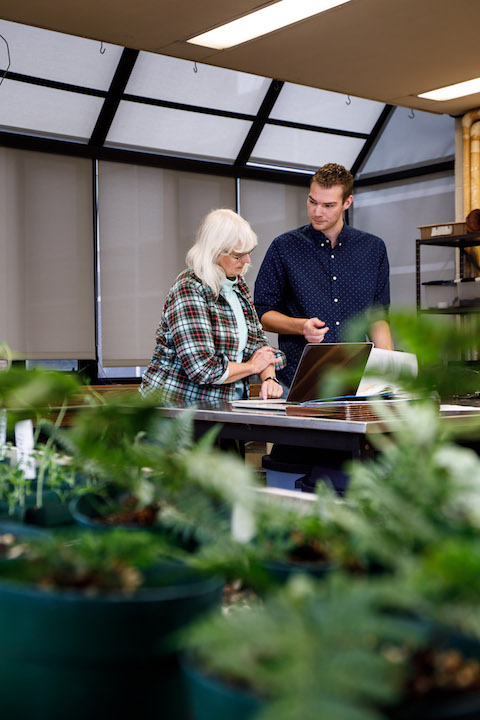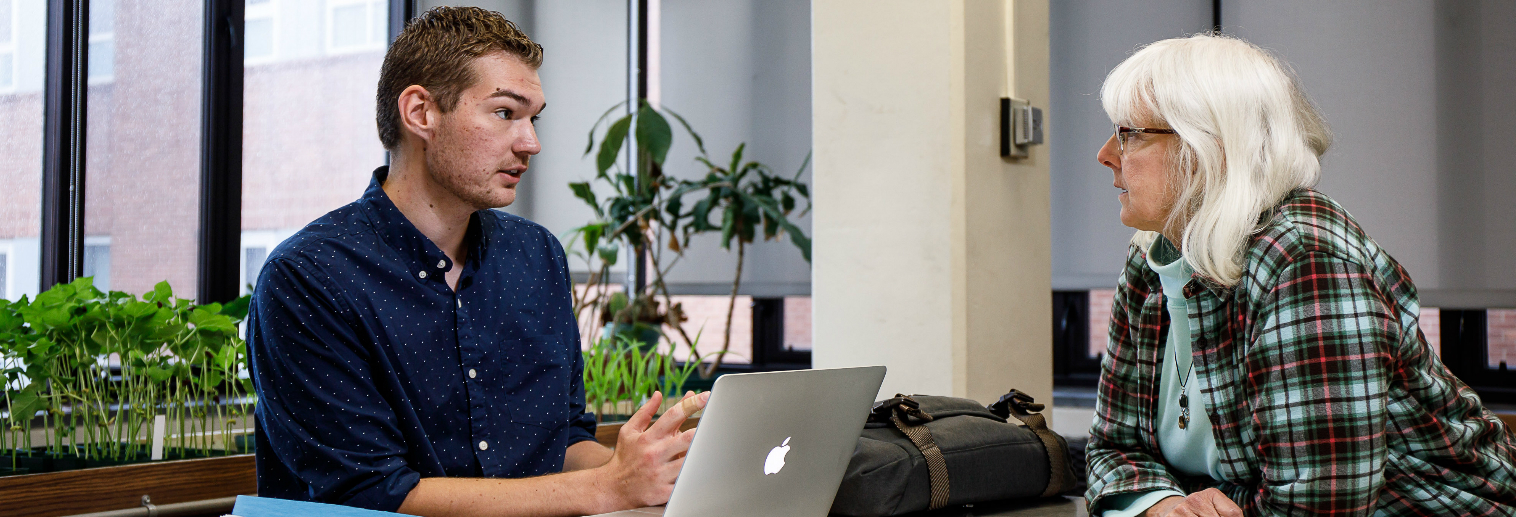Christopher Sorich ’19
“Monitoring of Prescribed Burn Areas at the Lehigh Gap Nature Center (LGNC)”
Major: Biology
Hometown: Allentown, PA
Project Advisor: Dr. Diane Husic
Describe your project.
My project was to conduct an ecological monitoring along the north face of the Kittatinny Ridge in Palmerton, PA. Much of this land was devoid of vegetation, stripped of topsoil by erosion and heavily contaminated with toxic heavy metals resulting from zinc smelting at the New Jersey Zinc Company since 1898. Revegetation efforts began in 2003 by the Lehigh Gap Nature Center (LGNC) using warm-season native grasses. Although initially successful, researchers and project managers have noticed a decline in grass coverage over the past years. For my project, I followed protocols established by the site to determine the plant biodiversity at the site and to determine the percentage of grass cover to compare to early years after the initial seeding. The results of this will guide future land management decisions at the site and provide insights into whether soil amendments or reseeding is needed.
How did your project come about?
I heard of Dr. Husic’s previous research at the site and immediately took an interest. Before this project we never properly knew each other, so reaching out to our Dean of Sciences was intimidating at first! However, after our first sit-down I found out we had a lot in common, such as our academic interests and the fact that we both originated from the same midwestern state.

What’s the best part about working with your faculty mentor? What valuable insights has she brought to your project?
Dr. Husic is a great instructor. She has taught me many valuable lessons about field research, while also mentoring me about the importance of seeing the bigger picture and the wider implications of our research. Her early career working as a biochemist has brought a variety of technical insights to our current research; however, her more recent interest in ecology encourages me to approach issues from more than one discipline.
What has been your biggest obstacle so far?
The weather. I began working at the site under hot and dry conditions, but later it seemed to rain every day! While this gave me a break to analyze my data, I will need to make up for lost time in the field.
What has been your biggest takeaway from this experience?
During my preliminary research, I read that the site was once considered “a sublime object of admiration … and … one of the most picturesque prospects in Pennsylvania.” Despite the change that occurred over the intervening century, I believe in the veracity of this statement. While people have the power to cause severe injury to an environment, people also have the capacity to be excellent stewards of our planet.
What was the result of your project?
Perhaps one of the most pressing issues at the site is the buildup of new topsoil relieved of potentially toxic concentrations of heavy metals. Since this process is contingent upon the decay of plant matter, land managers want to limit the number of plants which uptake large quantities of metals because their foliage will eventually become the new topsoil. While I am not finished, preliminary data suggests that the fires conducted are having a negative impact on the growth of some trees that accumulate zinc at high levels. This is very promising!
Overall, how do you feel about being awarded this opportunity? Why should other students take advantage of the SOAR program at Moravian University?
I feel privileged to have the opportunity to conduct research that is having an impact on my local community. Results from my undergraduate research will be used to help guide land management decisions and may also inform EPA officials as to the effectiveness of the prescribed burnings. I tell people to consider SOAR research for themselves because it can be a rewarding experience and a great way to find out what you really enjoy.
Do you plan to expand upon your research?
I have no doubts about continuing my research at the site. One of my interests is that no establishment or rare occurrences of some species of grasses have been noted. A possible reason for this die-off is that the annual production of seeds from the grasses has a low germination capacity. This could be due to zinc toxicity in the seeds or from contact with zinc in the soil, or low soil pH, since any limestone added over a decade ago would have dissipated long ago. The purpose of my future project is to disentangle whether it is zinc or soil pH that is causing reduced germination.
Any plans to present this research outside the SOAR presentations?
I have been at LGNC board meetings early on, and would like to share my findings with them after the compiling and analyzing of my data is complete. If given the opportunity, I would enjoy speaking with members of the EPA involved with the site.

